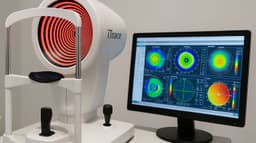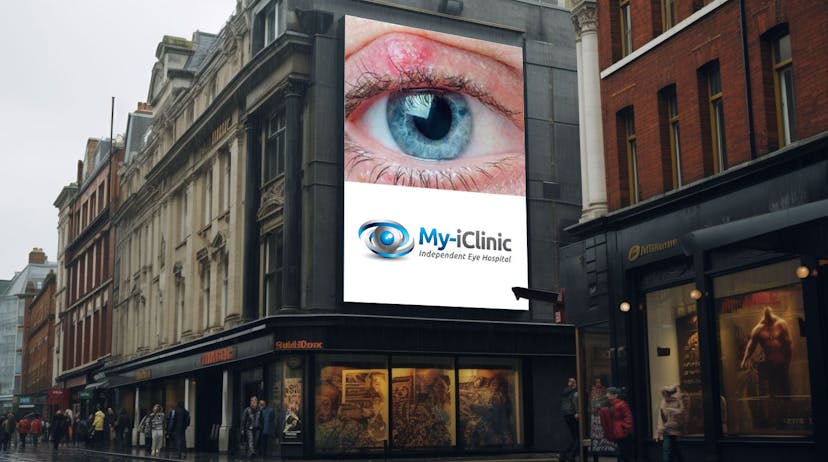
7 Keys To Maintaining Good Eye Health
Maintaining optimal eye health is crucial for a high quality of life and overall well-being. Our eyes serve as windows to the world, allowing us to take in the beauty around us and interact with our surroundings. They enable us to perform everyday tasks, from reading and driving to appreciating art and connecting with loved ones. Proper eye health is not only essential for clear vision, but it also plays a significant role in preventing various eye conditions and diseases. Regular eye examinations can detect early signs of issues such as glaucoma, cataracts, and macular degeneration, which, if left untreated, can lead to vision loss. By prioritising eye health, individuals can proactively address any concerns and take steps to preserve their vision for years to come.
Furthermore, good eye health is intertwined with overall physical health and well-being. The eyes are interconnected with the rest of the body, and many systemic health issues, such as diabetes and hypertension, can manifest through eye-related symptoms. By monitoring and maintaining eye health, individuals can often catch these broader health concerns in their early stages, allowing for timely intervention and management. Additionally, simple habits like maintaining a balanced diet rich in nutrients like omega-3 fatty acids, vitamin C, and antioxidants can significantly contribute to eye health. Therefore, recognising the importance of eye health not only safeguards our vision but also serves as a cornerstone for overall health and vitality.
1. Eat A Healthy Diet
Do not underestimate the power of a good healthy diet - your food intake can have a substantial effect on your eyes.
Antioxidants and nutrients can help to prevent retinal damage with lutein being particularly beneficial. Some foods that are especially good for your eye health include:
- Leafy Greens: Spinach, kale, and collard greens are rich in lutein and zeaxanthin, which are antioxidants that help protect the eyes from harmful light.
- Carrots: High in beta-carotene, which is converted into vitamin A in the body, carrots are known for their role in maintaining good vision.
- Sweet Potatoes: Another excellent source of beta-carotene, sweet potatoes promote good vision and help prevent night blindness.
- Bell Peppers: Red, orange, and yellow peppers contain high levels of vitamin C, which is an antioxidant that supports eye health.
- Berries: Blueberries, raspberries, and strawberries are rich in antioxidants and vitamin C, which help protect the eyes from damage caused by free radicals.
- Citrus Fruits: Oranges, lemons, and grapefruits are high in vitamin C, which plays a vital role in preventing cataracts and age-related macular degeneration.
- Eggs: They contain lutein and zeaxanthin, as well as zinc, which are all crucial for maintaining good vision.
- Fatty Fish: Salmon, mackerel, and trout are rich in omega-3 fatty acids, which help protect against dry eyes and macular degeneration.
- Nuts and Seeds: Almonds, chia seeds, and flaxseeds are good sources of vitamin E, which is an antioxidant that helps prevent eye damage.
- Legumes: Lentils, chickpeas, and black-eyed peas are high in bioflavonoids and zinc, which can help protect the retina and lower the risk of cataracts.
- Lean Meats: Beef, pork, and poultry are good sources of zinc, which helps maintain the health of the retina.
- Dairy Products: Milk, cheese, and yoghurt are rich in vitamin A and zinc, both of which contribute to good vision.
- Papayas: They are high in vitamin C and beta-carotene, which help reduce the risk of cataracts and promote healthy eyes.
- Tomatoes: They are high in lycopene, which is an antioxidant that helps protect the eyes from damage caused by free radicals.
- Squash: Like sweet potatoes, squash is high in beta-carotene, which supports good vision.

2. Exercise
Regular exercise is important in maintaining eye health, particularly for those over the age of 60. Exercise ensures good blood flow reducing risks of hardened or narrowing arteries which can lead to high blood pressure and affect the supply of blood to the eyes. Lack of exercise and obesity can lead to Type 2 diabetes and can increase the chances of developing sight-threatening diabetic retinopathy.
Here are some of the key advantages of exercise for the eyes:
- Improved Blood Circulation: Exercise promotes better blood flow throughout the body, including to the eyes. This enhanced circulation ensures that the eyes receive an ample supply of oxygen and essential nutrients, contributing to their overall health and function.
- Lowered Risk of Eye Conditions: Engaging in regular physical activity has been associated with a reduced risk of various eye conditions. This includes conditions like age-related macular degeneration (AMD), glaucoma, and diabetic retinopathy, as exercise can help regulate blood sugar levels and maintain healthy blood vessels in the eyes.
- Maintenance of a Healthy Weight: Exercise helps in achieving and maintaining a healthy weight. This is particularly important for reducing the risk of obesity-related eye conditions, such as diabetic retinopathy and cataracts. Maintaining a healthy weight also helps prevent conditions like sleep apnea, which can have secondary effects on eye health.
- Regulation of Blood Pressure: Regular physical activity can help regulate blood pressure levels. High blood pressure is a risk factor for conditions like hypertensive retinopathy, which can lead to vision problems or even vision loss if left untreated.
- Reduced Risk of Diabetes-Related Eye Complications: Exercise plays a crucial role in preventing and managing diabetes, which is a significant risk factor for various eye conditions, including diabetic retinopathy. By helping to control blood sugar levels, exercise contributes to the prevention of complications affecting the eyes.
- Maintenance of Healthy Cholesterol Levels: Regular exercise helps in managing cholesterol levels. High cholesterol is associated with an increased risk of atherosclerosis, a condition that can affect blood vessels in the eyes and lead to vision problems.
- Promotion of Eye-Friendly Antioxidants: Exercise stimulates the production of antioxidants in the body, which help protect the eyes from oxidative stress. This is important for reducing the risk of conditions like cataracts and age-related macular degeneration.
- Reduction of Eye Strain: Exercise, particularly activities that involve focusing on objects at different distances, can help reduce eye strain. This is important in today's digital age, where prolonged screen time can lead to digital eye strain.
It's worth noting that while exercise provides numerous benefits for eye health, it's just one component of maintaining overall well-being. A balanced diet, regular eye check-ups, and protective measures like wearing sunglasses in bright sunlight also play important roles in preserving good vision. Always consult with a healthcare professional before starting a new exercise regimen, especially if you have pre-existing health conditions.
3. Avoid Excessive Alcohol Intake
According to The Royal College of Ophthalmologists, “Alcohol abuse, particularly in heavy smokers who have also neglected their diet, is known to cause a toxic, progressive optic neuropathy. Typically, this causes bilateral, symmetrical, painless, visual impairment with loss of colour vision and a central visual field defect.”
Here are some of the key ways in which it can impact eye health:
- Dry Eyes: Alcohol is a diuretic, meaning it causes the body to lose fluids. This can lead to dehydration, which in turn can result in dry eyes. Dry eye syndrome can cause discomfort, irritation, and even blurred vision.
- Nutritional Deficiencies: Chronic alcohol abuse can lead to poor nutrition, as it often replaces essential nutrients in the diet. Deficiencies in vitamins and minerals like vitamin A, vitamin B-complex, and zinc, which are crucial for maintaining eye health, can occur. This can lead to a higher risk of eye-related problems.
- Vision Impairment and Blurred Vision: Excessive alcohol consumption can impair the function of the optic nerve and interfere with the brain's ability to process visual information. This can lead to blurry or distorted vision.
- Cataracts: Studies have shown a correlation between heavy alcohol consumption and an increased risk of developing cataracts. Cataracts involve the clouding of the lens of the eye, leading to vision impairment.
- Optic Neuropathy: Chronic alcohol abuse can lead to a condition known as alcoholic optic neuropathy. This is a serious condition that results from damage to the optic nerve, leading to vision loss, particularly in the central field of vision.
- Macular Degeneration: Prolonged excessive drinking has been associated with an increased risk of age-related macular degeneration (AMD). This is a progressive eye disease that affects the macula, the central part of the retina, leading to vision loss.
- Increased Risk of Eye Injuries: Alcohol impairs coordination and judgment, which can lead to accidents and injuries. Eye injuries, including those that can result in permanent damage, are more likely to occur when a person is intoxicated.
Moreover, moderate alcohol consumption, defined as up to one drink per day for women and up to two drinks per day for men, is generally considered safe for most adults. However, excessive and chronic alcohol consumption poses serious health risks, including those to eye health. If you have concerns about your alcohol consumption or its effects on your health, it's important to seek advice from a healthcare professional.
4. Quit Smoking
Smoking exerts profoundly detrimental effects on eye health, significantly increasing the risk of vision-related problems. Firstly, smoking is a major contributor to the development and progression of age-related macular degeneration (AMD), a leading cause of irreversible vision loss among older adults. The toxic chemicals in cigarette smoke, including nicotine and carbon monoxide, constrict blood vessels in the eyes, diminishing the flow of oxygen and nutrients to the delicate macular region. This hinders the eye's ability to repair itself and makes the macula more susceptible to damage from oxidative stress. Consequently, smokers are two to four times more likely to develop AMD than non-smokers, with the risk escalating with the number of cigarettes smoked and the duration of smoking.
Furthermore, smoking significantly heightens the risk of cataracts, a clouding of the eye's natural lens that leads to impaired vision. The harmful substances in tobacco smoke accelerate the breakdown of proteins in the lens, creating a cloudy opacity that obstructs light from reaching the retina. Studies have shown that smokers are up to three times more likely to develop cataracts compared to non-smokers, and the risk is further elevated for heavy and long-term smokers. Even secondhand smoke can pose a risk, with non-smokers exposed to smoke having an increased likelihood of developing cataracts. Given these profound consequences, quitting smoking is one of the most impactful steps individuals can take to safeguard their eye health and preserve clear vision in the long term.
5. Protect Your Eyes From The Sun
Prolonged and unprotected exposure to the sun's ultraviolet (UV) radiation can lead to various eye-related problems, emphasising the importance of taking precautions to safeguard our vision. The cornea, lens, and retina of the eyes are all susceptible to UV damage. Over time, cumulative exposure to UV rays can increase the risk of conditions like cataracts, where the lens becomes clouded, and age-related macular degeneration (AMD), which can result in severe vision loss. Moreover, excessive UV exposure can cause photokeratitis, akin to a sunburn of the eyes, leading to redness, discomfort, and temporary vision impairment. Additionally, the delicate skin around the eyes is highly susceptible to skin cancers, including basal cell carcinoma and squamous cell carcinoma. Hence, it is imperative to recognise the potential harm UV radiation can cause and to adopt protective measures.
Preventing UV-induced damage to the eyes involves a combination of proactive measures. Wearing sunglasses that provide 100% UV protection is paramount. Look for sunglasses labelled as blocking both UVA and UVB rays. A wide-brimmed hat can also offer additional coverage, particularly during prolonged outdoor activities. UV-blocking contact lenses are available for those who require vision correction, providing an extra layer of defence. It is essential to be mindful of peak sun hours, typically between 10 AM and 4 PM, and seek shade when possible. Moreover, be cautious around reflective surfaces like water, sand, and snow, which can intensify UV exposure. Regular eye check-ups are crucial, as they allow for early detection and management of UV-related eye conditions. By adopting these preventive measures, individuals can significantly reduce their risk of UV-induced eye damage and preserve their vision for years to come.
6. Protect Your Eyes During Hazardous Work
Protecting your eyes from hazards in the workplace is paramount for maintaining long-term vision and overall well-being. Depending on the nature of the job, various hazards like flying debris, chemicals, intense light, or dust particles can pose a significant risk to eye health. It is crucial to identify potential dangers and implement appropriate safety measures. This often involves wearing appropriate protective eyewear, such as safety glasses, goggles, or face shields, that are designed to shield the eyes from specific hazards. These specialised eyewear options are constructed with durable materials and impact-resistant lenses, providing a crucial barrier against potential injuries. Regular maintenance and inspection of safety eyewear are also essential to ensure they remain effective in guarding against workplace hazards.
In addition to using protective eyewear, establishing a culture of awareness and adherence to safety protocols is fundamental in any work environment. This includes providing training and education to employees on the importance of eye safety and the proper use of protective eyewear. Employers should also conduct regular assessments of potential eye hazards and take appropriate measures to mitigate risks. Implementing engineering controls, such as screens or barriers, can further reduce the likelihood of eye injuries. Moreover, maintaining a clean and organized work environment can prevent accidents caused by clutter or poorly stored materials. By prioritising eye safety in the workplace, employers can create a safer, more productive environment for their employees, reducing the risk of debilitating eye injuries and ensuring long-term eye health.
7. Regular Sight Checks
This is probably the most important measure you can take to maintain good eye health. Regular sight checks every two years or when you suspect a problem with your vision can go a long way in preventing eye issues. Catching conditions such as glaucoma early can allow for the necessary treatment to be arranged.
For more information on eye care and treatment services that we provide, simply browse our website or give us a call at 02084458877.
For more information on National Eye Health Week and how you can get involved, visit www.visionmatters.org.uk
Find out more by Speaking to our team









